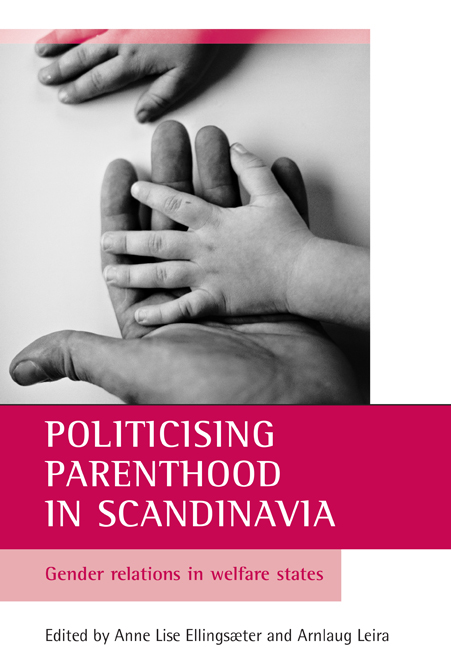Book contents
- Frontmatter
- Contents
- List of boxes, figures and tables
- Acknowledgements
- List of contributors
- one Introduction: politicising parenthood in Scandinavia
- Part One Politicising parenthood – legacies and challenges
- Part Two Gender equality and parental choice in welfare state redesign
- Part Three Work, family and the welfare state: redefining family models
- Index
eight - Woman-friendliness and economic depression: Finland and Sweden in the 1990s
Published online by Cambridge University Press: 15 January 2022
- Frontmatter
- Contents
- List of boxes, figures and tables
- Acknowledgements
- List of contributors
- one Introduction: politicising parenthood in Scandinavia
- Part One Politicising parenthood – legacies and challenges
- Part Two Gender equality and parental choice in welfare state redesign
- Part Three Work, family and the welfare state: redefining family models
- Index
Summary
Since the 1970s, a distinct feature of Nordic policies has been the primacy of gender equality as a policy objective (Nyberg, 2002; Björnberg, 2002). Family and parenthood policies have promoted opportunities for both parents to combine paid employment with joint responsibility for the care of their children. In the 1970s the proportion of women working outside the home increased steadily, and most children grew up with parents who shared responsibility for supporting the family. This marked a turning point also in the policy approaches to parenthood. Politicians justified the extensive investment in public day care with the fact that mothers had already entered the labour market.
Sweden and Finland were hard hit by economic recession in the early 1990s. In Finland the economy collapsed, budget deficits soared and unemployment spiralled out of control. Gross Domestic Product (GDP) fell by more than 10%, and the unemployment rate quadrupled to almost 17% (Kalela et al, 2001, p 3). Between 1990 and 1993, the number of Swedish people in employment fell by more than half a million, GDP fell for three years running and state finances showed a sizeable deficit (SOU, 2000: 3, p 38). The unemployment rate increased from 1.6% to 8.1% (see also Haataja and Nyberg, this volume).
In this chapter I will analyse family and parenthood policy developments in Sweden and Finland during the 1990s in respect to economic equality between parents. What happened to economic equality when the mature welfare states of Sweden and Finland were hit by a deep recession? In terms of economic growth the recession was soon over in both countries. However, the government had to deal with huge budget deficits for many years. I will take economic recession and recovery as a strategic case for examining the sustainability of the gender equality ambition.
Woman-friendliness in Sweden and Finland
From an historical perspective, the Nordic countries were among the first to introduce work/family reconciliation policies as part of a deliberate attempt to increase the number of women in paid employment (Gauthier, 1996; Alestalo and Kuhnle, 2000; Pfenning and Bahle, 2000; Nyberg, 2004). This reflects the fact that there was a political will to bring about economic equality between parents by means of policies that facilitate labour force participation by mothers.
- Type
- Chapter
- Information
- Politicising Parenthood in ScandinaviaGender Relations in Welfare States, pp. 171 - 194Publisher: Bristol University PressPrint publication year: 2006



